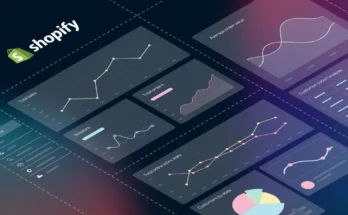The money you owe is important to handling debt well. You owe money for school, a house, or using credit cards. So, having a clear plan to pay it off helps you stay in control of your finances. This guide will explain all you need to understand about repayment plans. Like the different kinds, how to make one, and tips for making it work well.
What are the different ways to pay back student loans?
There are two main types of student loan repayment plans. Standard plans and income-based plans. With a standard plan, you pay a fixed amount each month until your loan is paid off. There are a few options for standard plans:
- Standard repayment plan
- Graduated repayment plan
- Extended repayment plan
Income-based plans, however, adjust your monthly payment based on how much you earn. Some of these plans also offer loan forgiveness. Where your remaining balance is forgiven after a certain period. One common forgiveness program is Public Service Loan Forgiveness (PSLF). It is available to full-time public service workers.
The income-based plan options.
- Revised Pay As You Earn repayment plan (REPAYE)
- Pay-as-you-earn repayment plan (PAYE)
- Income-Based Repayment Plan (IBR)
- Income Contingent Repayment Plan (ICR)
- Income-Sensitive Repayment Plan
Every plan has its own important features to consider.
Types of Repayment Plans.
- Fixed Repayment Plan
With this plan, you pay the same amount every month until you have paid off all your debt. It’s steady and helps you plan your budget. Because you know exactly how much you need to pay each time.
- Graduated Repayment Plan
If you start with lower payments that increase gradually, it’s good for people who expect to earn more money in the future. Like recent graduates starting their careers.
- Income-Driven Repayment Plan
These plans adjust your payments based on how much you earn and how big your family is. Some examples are income-based repayment (IBR), pay-as-you-earn (PAYE), and revised pay-as-you-earn (REPAYE). They’re helpful if your income changes a lot or if you owe a lot compared to what you earn.
- Balloon Repayment Plan
With this plan, you make smaller payments each month, but there’s a big payment called a “balloon” payment at the end. This plan is common for certain mortgages or business loans.
Create a Repayment Plan.
- Understand Your Money Situation. First, find out about the money you owe, like how much and the interest rates. And the smallest amount you need to pay each month. Then, see how much money you make, spend, and what you want to do with your money.
- Decide What You Want. Figure out what you want to do with your money. Do you want to pay off your debt quickly? Does it make smaller monthly payments or spend less on interest?
- Pick the Best Plan. Look at your money situation and goals. Then choose the best way to pay off your debt. Think about things like interest rates, how flexible the plan is, and if you qualify for it.
- Make a Money Plan. Make a plan that says exactly how much money you will use to pay off your debt. Cover your needs, and save. Keep track of what you spend to make sure you stick to your plan.
- Talk to Your Lenders. If you are having trouble paying your debt, talk to the people you owe money to. They might give you choices like changing your loan terms, delaying payments, or getting a new loan to make it easier for you to handle your debt.
When You Are on Income-Based Repayment Plans.
It’s important to understand how your payments are figured out by the Department of Education.
These plans usually calculate your monthly payment based on what’s called your extra money. This extra money is what you have left after taking away a certain amount for basic needs.
For plans like REPAYE, PAYE, and IBR. Your extra money is figured out by finding the difference between your yearly earnings. It’s 150% of the federal poverty guidelines.

This means that if you don’t earn much, your monthly payments could be quite low. For instance, if you make $30,000 a year and live in the continental United States with one child, your monthly payments under REPAYE could start at just $44.
Another plan, ICR, calculates your extra money a bit differently. It looks at the difference between your yearly earnings and 100% of the poverty guidelines.
There is also the Income Sensitive Repayment Plan. So, just looks at your yearly earnings and does not consider the poverty guidelines. Each of these income-based student loan repayment plans has its own specifics. So, let’s dive into each one.
Tips for Successful Repayment.
Here are the tips, in simpler words:
Focus on high-interest debt.
If you owe money to different places, pay off the ones that charge you the most interest first. This way, you will save money on interest in the long run.
Use automatic payments.
Set up automatic payments so you don’t forget to pay on time. This helps you avoid extra fees and can make your credit score better over time.
Be Strong.
Stick to your plan for paying back what you owe. If it’s hard or unexpected, things come up. Think about your big money goals and how great it will feel to be debt-free.
Celebrate your progress.
When you reach important points, it is like paying off one debt or reaching a certain amount of repayment. Take a moment to celebrate. It keeps you motivated.
Check and change.
Sometimes, look at your plan to make sure it still fits your financial situation and goals. You might need to make changes if things have changed for you.
In Short:
A good plan to pay back what you owe is significant for getting rid of debt and getting your money in order. If you know about the different plans, then make your plan and do things right. You can pay off what you owe and have a better financial future. Just remember to stick to your plan and be disciplined. But don’t be afraid to ask for help if you need it.



